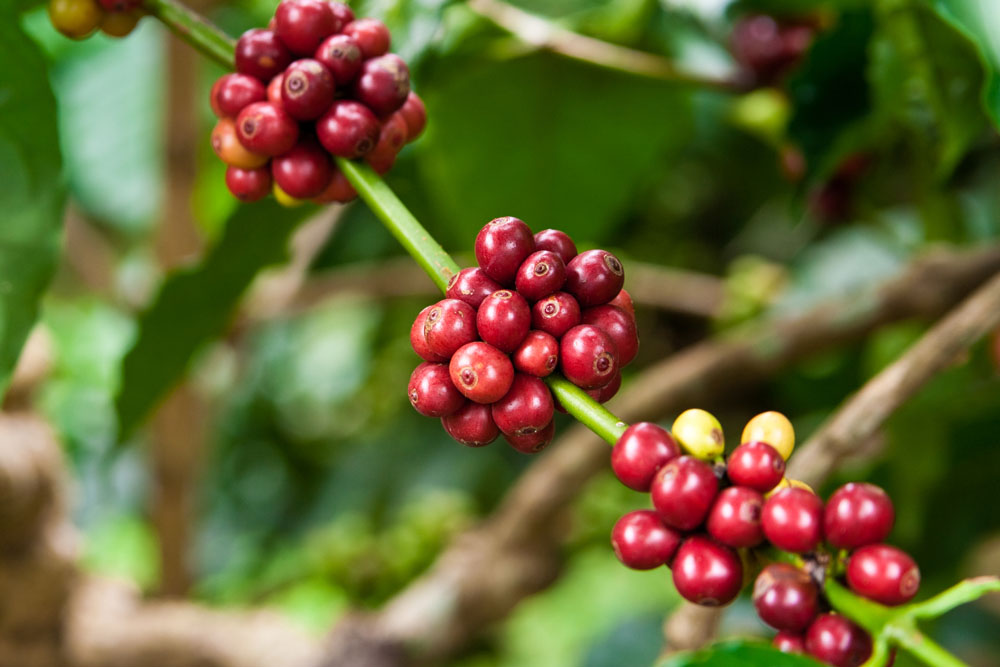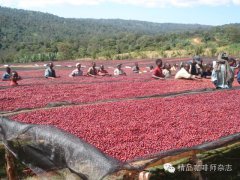St. Helena Island is located in the Atlantic boutique coffee island coffee beans.
The term "fine coffee" was first put forward by Ms. Knudsen of the United States in Coffee and Tea magazine. At that time, Ms. Knudsen, as a coffee buyer of B.C. Ireland in San Francisco, was very dissatisfied with the neglect of the quality of raw coffee in the industry, and even some big roasters mixed a large amount of Robesda beans in the comprehensive beans, so she put forward the concept of fine coffee to advocate the improvement of the quality of the industry. This term is used to describe coffee beans with distinctive flavor characteristics that grow in a special environment. Its use in international coffee conferences makes it spread rapidly.
Napoleon believed that the only good thing from the island was coffee.
St. Helena (St Helena) is located in the Atlantic Ocean, 2000 km from Africa and 3500 km from Brazil, with a population of about 5000. Of course, the island is famous because Napoleon was exiled after the Battle of Waterloo in 1815 and died on the island in 1821.
Coffee was first grown on the island of St. Helena in 1732 and was transported from Yemen on a ship called the Houghton. Although some other introduced plants have failed since the 1860s, coffee has taken root and flourished here.
The island also experienced a coffee improvement movement, where in the mid-1980s, David? David Henry began to devote himself to the development of the coffee industry on the island in order to produce the best quality coffee. Coffee trees on St. Helena are grown entirely on natural conditions, with no machinery, no tractors, and even miscellaneous trees that have been cut down to make room for new coffee trees are recycled.

Important Notice :
前街咖啡 FrontStreet Coffee has moved to new addredd:
FrontStreet Coffee Address: 315,Donghua East Road,GuangZhou
Tel:020 38364473
- Prev

Madagascar is basically the producer of Robbins coffee, commercial coffee beans.
The term "fine coffee" was first put forward by Ms. Knudsen of the United States in Coffee and Tea magazine. At that time, Ms. Knudsen, as a coffee buyer at B.C. Ireland in San Francisco, was very dissatisfied with the neglect of the quality of raw coffee in the industry, and even some big roasters mixed a large amount of Robesda beans in the comprehensive beans, so she put forward the concept of boutique coffee.
- Next

How to treat coffee beans How to treat fine coffee
Buy coffee beans to pay attention to the choice of QS certification products, now the country has coffee beans into the mandatory scope, if there is no QS, that means this product is not in line with food safety regulations. About coffee grease: coffee moisture water, Italian coffee beans, itself should have grease. The law of grease is this: fresh, medium, and deep-roasted coffee beans will have
Related
- Does Rose Summer choose Blue, Green or Red? Detailed explanation of Rose Summer Coffee plots and Classification in Panamanian Jade Manor
- What is the difference between the origin, producing area, processing plant, cooperative and manor of coffee beans?
- How fine does the espresso powder fit? how to grind the espresso?
- Sca coffee roasting degree color card coffee roasting degree 8 roasting color values what do you mean?
- The practice of lattes: how to make lattes at home
- Introduction to Indonesian Fine Coffee beans-- Java Coffee producing area of Indonesian Arabica Coffee
- How much will the flavor of light and medium roasted rose summer be expressed? What baking level is rose summer suitable for?
- Introduction to the characteristics of washing, sun-drying or wet-planing coffee commonly used in Mantenin, Indonesia
- Price characteristics of Arabica Coffee Bean Starbucks introduction to Manning Coffee Bean Taste producing area Variety Manor
- What is the authentic Yega flavor? What are the flavor characteristics of the really excellent Yejasuffi coffee beans?

